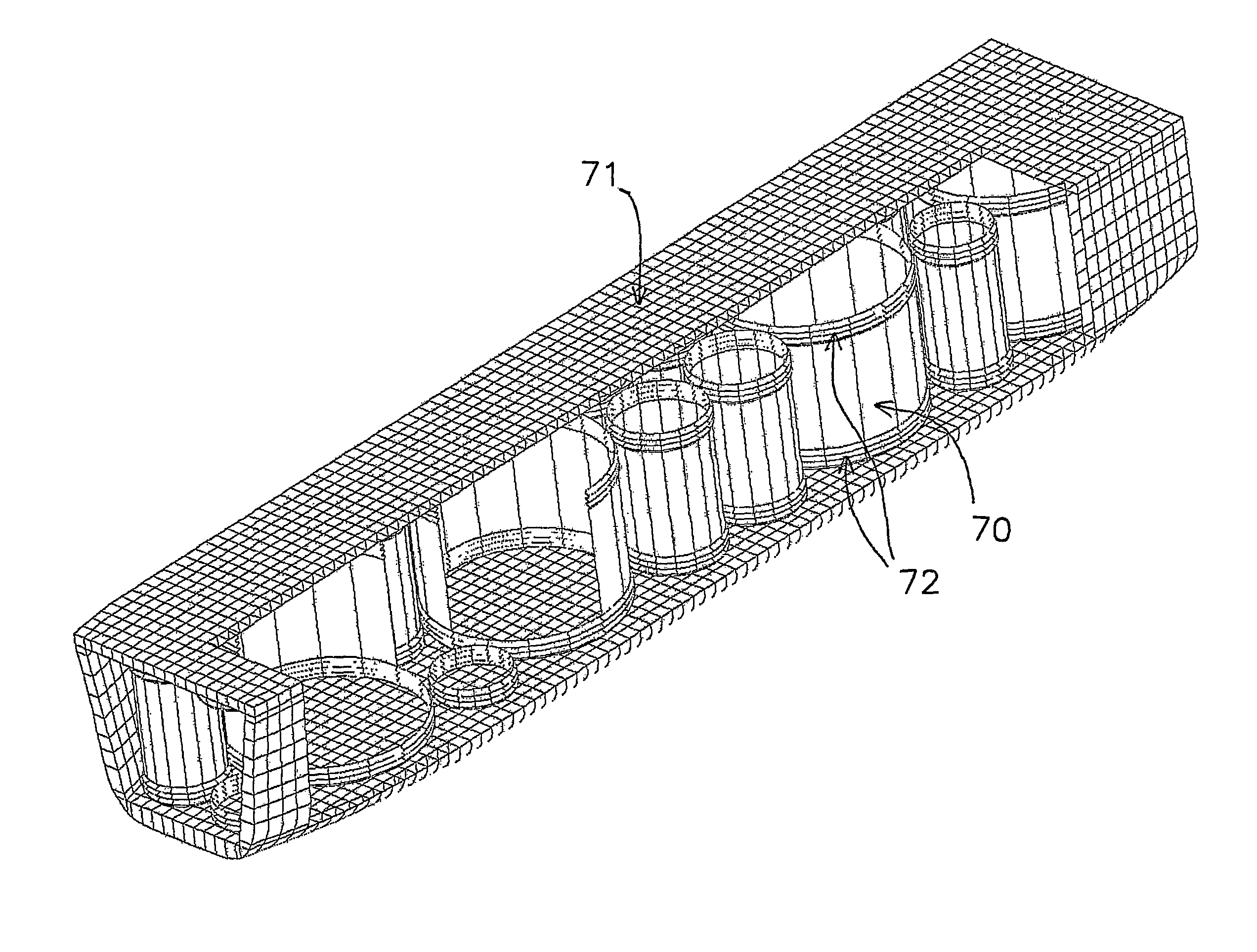Ship with liquid transport tanks provided with deformation absorbers
a technology of liquid transport tanks and absorbers, which is applied in the direction of waterborne vessels, special purpose vessels, floating buildings, etc., can solve the problems of undesirable mixing of stored products, cracks in the tank walls, and formation of cracks, and achieves simple construction and little to no maintenance
- Summary
- Abstract
- Description
- Claims
- Application Information
AI Technical Summary
Benefits of technology
Problems solved by technology
Method used
Image
Examples
Embodiment Construction
[0040]In FIG. 1 the transport tank is indicated in its entirety by the reference numeral 1. The transport tank 1 consists of a tank bottom 2, a cylindrical tank circumferential wall 3 and a tank roof 4. The tank bottom 2 is of a flat design and, with the interposition of an insulating layer 6, is connected to a lower deck 7 of a hull of a ship not shown in any greater detail. The tank roof 4 is connected to an upper deck 9 of the ship's hull, with the interposition of an insulating layer 8. The tank circumferential wall 3 is partially supported towards the bottom by deformable support means 12. The support means 12 engage upon the bottom part of the tank circumferential wall 3. Deformation absorbers 15, 16 are accommodated in the tank wall. The deformation absorbers 15, 16 are formed here as sections which are quadrantal-shaped (shaped like a quarter circle) in cross section and extend between the tank bottom 2 or the tank roof 4 and the tank circumferential wall 3 respectively. The...
PUM
 Login to View More
Login to View More Abstract
Description
Claims
Application Information
 Login to View More
Login to View More - R&D
- Intellectual Property
- Life Sciences
- Materials
- Tech Scout
- Unparalleled Data Quality
- Higher Quality Content
- 60% Fewer Hallucinations
Browse by: Latest US Patents, China's latest patents, Technical Efficacy Thesaurus, Application Domain, Technology Topic, Popular Technical Reports.
© 2025 PatSnap. All rights reserved.Legal|Privacy policy|Modern Slavery Act Transparency Statement|Sitemap|About US| Contact US: help@patsnap.com



